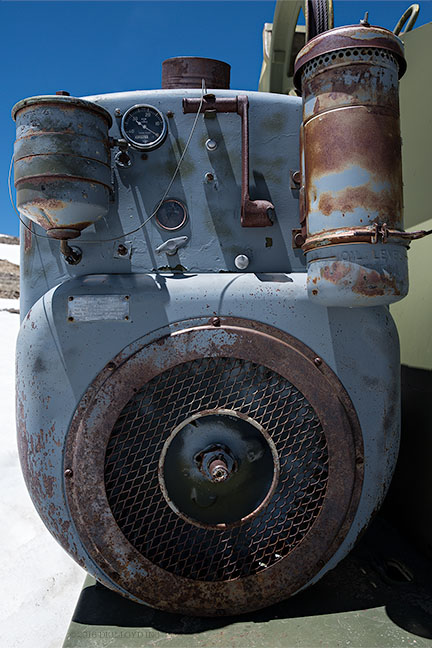EXCERPT page containing first few paragraphs. 2024-04-24 17:49:12
UA_SEARCH_BOT_compatible_botmozilla/5.0 applewebkit/537.36 (khtml, like gecko; compatible; claudebot/1.0; +claudebot@anthropic.com) @ 18.226.187.24
For full access, subscribe here. Or click title to login. ![]()
Example: Shallow Stack for Sharpness in Narrow Zone (Blue Engine on Green Machine)
This close-range shot is difficult to make sharp even at f/13 because the projecting surfaces are just too far from the gauges area. The engine and its various parts will be persuasive only if crisp and even if shot at f/13 of f/16 for depth of field, the fine metallic and paint texture would be significantly degraded by diffraction. By using f/9, most of the brilliance can be retained.
Thus this example is a “shallow stack” siutation where the goal is to make a sharp image across the front area of the engine and its parts. Sharpening the background would not only have required more frames, it would have made a less attractive image.
A shallow stack could have been made at f/4 or even f/1.4 or f/2 for more background blur, but this would have required many more frames. At this close range, f/9 is useful in keeping the frame count at just 3 frames, yet leaving useful background blur. While not done here, it would have been easy to use retouching to further blur the background by cloning in the frame focused at the closest distance.
Article continues for subscribers...
Diglloyd Making Sharp Images is by yearly subscription. Subscribe now for about 13 cents a day ($50/year).
BEST DEAL: get full access to ALL 8 PUBLICATIONS for only about 75 cents a day!
Diglloyd Making Sharp Images articulates years of best practices and how-to, painstakingly learned over a decade of camera and lens evaluation.
Save yourself those years of trial and error by jump-starting your photographic technical execution when making the image. The best lens or camera is handicapped if the photographer fails to master perfect shot discipline. High-resolution digital cameras are unforgiving of errors, at least if one wants the best possible results.
- Eases into photographic challenges with an introductory section.
- Covers aspects of digital sensor technology that relate to getting the best image quality.
- Technique section discusses every aspect of making a sharp image handheld or on a tripod.
- Depth of field and how to bypass depth of field limitations via focus stacking.
- Optical aberrations: what they are, what they look like, and what to do about them.
- MTF, field curvature, focus shift: insight into the limitations of lab tests and why imaging performance is far more complex than it appears.
- Optical aberrations: what they are, what they look like, and what to do about them.
- How to test a lens for a “bad sample”.
Intrigued? See Focusing Zeiss DSLR Lenses For Peak Performance, PART ONE: The Challenges, or (one topic of many) field curvature.

Focus-stacked image, 3 frames
NIKON D810 + Zeiss Otus 28mm f/1.4 APO-Distagon
[low-res image for bot]

